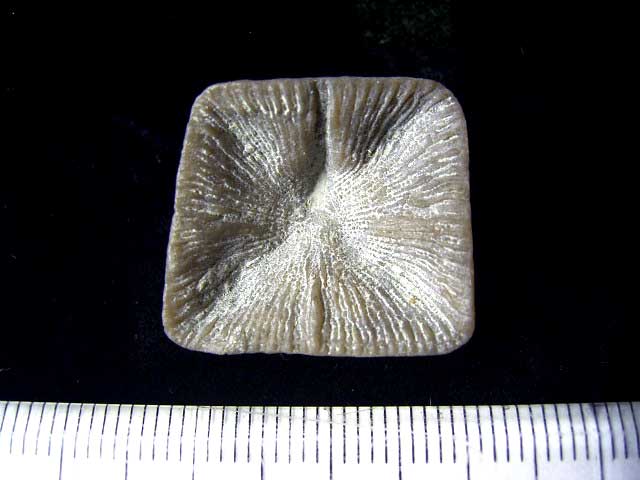Ever since our visit to the vast coral collections at the Smithsonian Institution, we’ve had our mind on all the “unseen coral” species out there, living and fossil. We think we know a lot about coral but really, the aquarium hobby has collective expertise on just the tiny fraction of coral species that are available to us, that we can grow, that we find ‘pretty’ and which are otherwise legal to obtain.
By and large our knowledge of corals begins and ends with shallow water species primarily from the Indo Pacific Ocean. Corals that are strictly found in the Indian Ocean, or in the deep, or in the deep past and even Caribbean corals are complete novelties to the aquarium world at large.

The first unseen coral we want to bring to your attention today is the very peculiar Goniophyllum pyramidale. We’ll confess that our understanding and knowledge of extinct coral is quite rudimentary, but we had to take a stab at the very interesting looking square corallite of Goniophyllum.
Before there were Hexacoral (modern stony corals) and Octocorals (modern soft corals), there were Tetracorals. Also known as Rugose corals, the extinct group of Tetracorals had a body plan arranged in multiples of four, as opposed to the six-part and eight-part body plan of the aforementioned living coral groups.

More importantly, the Tetracorals had a bilateral symmetry as opposed to radial symmetry of nearly all known corals today. Most of the time the four part body plan and bilateral symmetry of Tetracorals yielded a circular corallite like what is commonly found in widespread fossils of various horn coral species.

But in one particularly neat group of Rugose corals, the Goniophyllum developed into very beautiful and unique square corallites that must have made one heckuva neat looking coral when it was living. Some exceptional fossils of Goniophyllum clearly show the radiating septa which could have housed fleshy living tissue and large tentacles like modern LPS, but most likely these were thin-tissued corals that still could have had colorful tissue and patterns like Leptoseris.
Alas, since this group of corals and all the members of Tetracorals died out millions of years ago, we will never know what these corals truly look like. Thankfully, there’s still a lot of very neat unseen corals that are alive and we’ve got a lot to learn about coral beyond what you see at the local fish store, online and in your own tank. [Ohio History]




